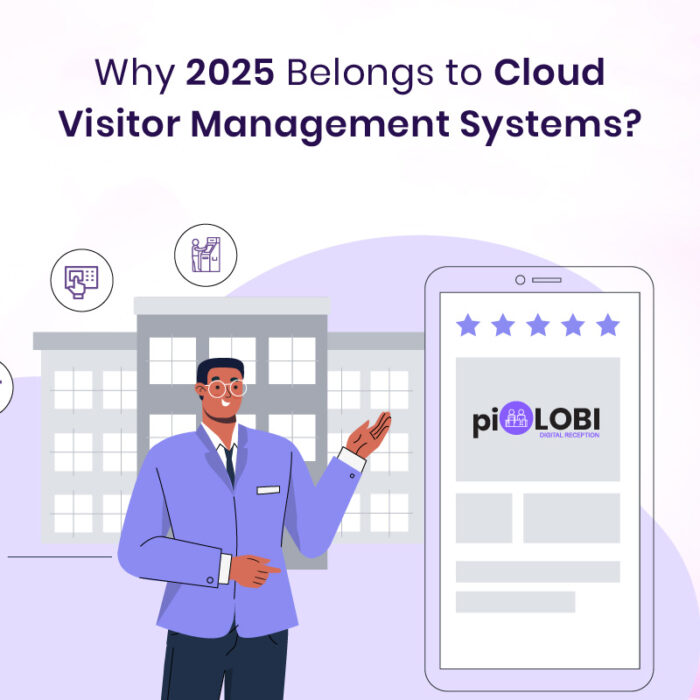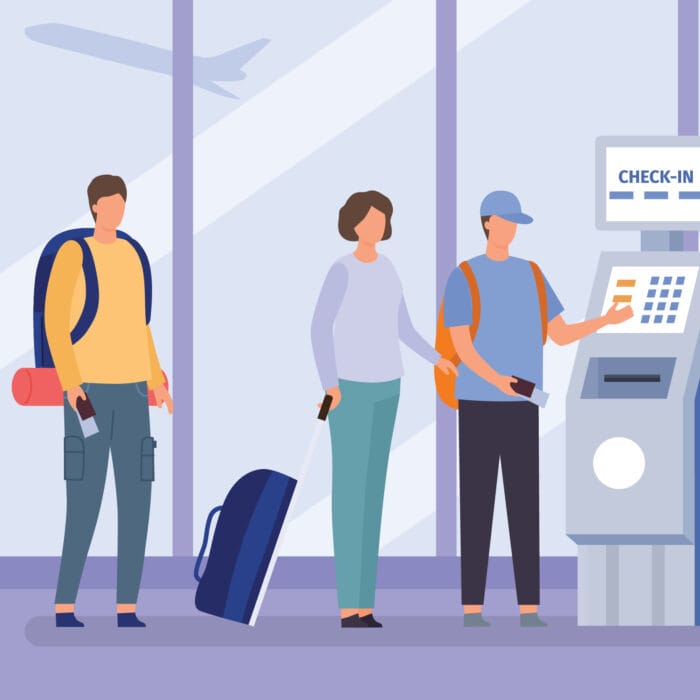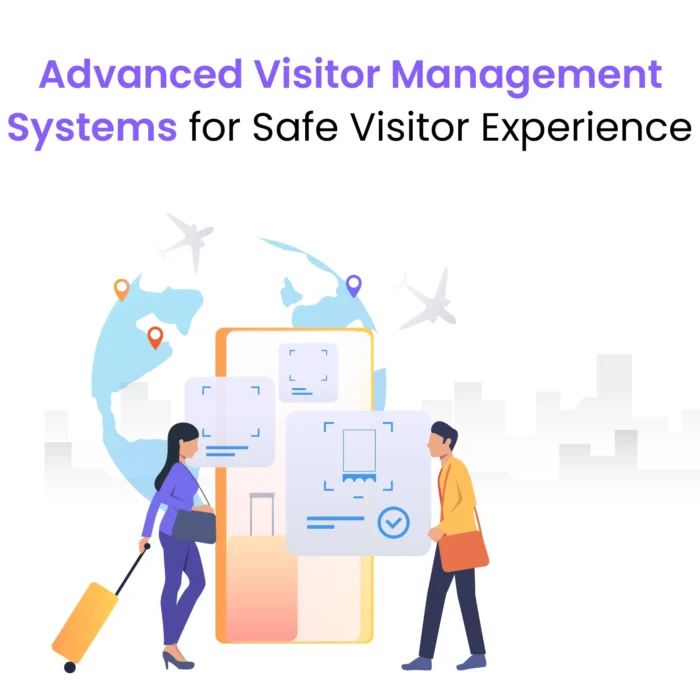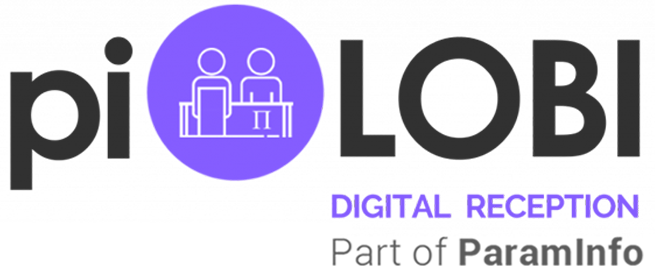
The Critical Role of Visitor Management System in Hospital
Did you know that in the entire world, nearly 30% of hospitals report unauthorized access incidents, and this is due to inefficient visitor management systems (VMS)? This is an alarming statistic that highlights a critical issue that healthcare industries face today.
Old method of managing hospital visitors in general involves a lengthy check-in process, incomplete visitor data logs, and inadequate security measures, leading to inefficiencies and potential security threats.
Therefore, in a world where 90% of healthcare data breaches target unauthorized access, implementing advanced visitor management systems in hospitals or any other healthcare system is very important.
The Advanced Hospital Visitor Management System has the potential to transform hospital visits by enhancing security, improving operational efficiency, and significantly boosting patient satisfaction. In this blog, we will examine the different methods through which these systems can transform Hospital Visitor Management Systems, guaranteeing that each visit is secure, orderly, and effective.
Advantages of Advanced Visitor Management Systems
Advanced hospital visitor management system has a range of benefits for hospitals. Especially in improving the experiences of hospital employees and in improving patient care.
Here are 10 major advantages of implementing a visitor management system in hospitals:
1. Optimized Check-in Procedure
The old method of visitor check-in methods can be time-consuming and inefficient. A VMS streamlines this process, allowing visitors to check in quickly and easily. This not only shortens wait times but also minimizes disruptions for hospital staff, enabling them to concentrate more on patient care.
2. Improved Security for Personnel and Patients
A visitor management system guarantees that only individuals who are permitted can enter designated areas of the hospital. This increased level of security helps protect both staff and patients from potential threats, creating a secure atmosphere for all.
3. Accurate Visitor Tracking
A VMS makes sure that accurate documentation of every visitor is kept, including essential details like check-in and check-out times. This data plays an important role in maintaining a secure hospital environment and can prove invaluable during emergencies or investigations.
By knowing the exact details of who is on the premises at a given time, hospital staff can operate with greater confidence and with a cool mind.
4. Protecting Patient Privacy
By regulating access to patient areas, a visitor management system in hospitals can help safeguard patient privacy and confidentiality. Only authorized visitors are allowed to take entry. This reduces the chances of disruptions or unauthorized access to sensitive patient information. Further, it also supports a more comfortable and secure recovery experience for patients.
5. Increased Effeciency for Hospital Staff
A VMS automates the visitor check-in process, thus freeing up time for hospital staff, saving their valuable time so that they can focus on their primary responsibilities. This further improves patient care and contributes to smoother, more efficient hospital operations.
6. Improved Communication and Coordination
A VMS improves internal communication and coordination by automatically sending notification to hospital staff. This makes sure that visitors are quickly guided to the correct location, minimizing confusion and improving both staff responsiveness and the overall visitor experience.
7. Emergency Preparedness
In the event of an emergency, a hospital will offer real-time updates regarding the quantity and whereabouts of visitors throughout the hospital. This data is crucial for hospital staff to efficiently execute evacuation protocols and guarantee the safety of all individuals present.
8. Compliance with Regulations
Healthcare facilities in general are required to follow various regulations concerning visitor management and the privacy of patients. A visitor management system helps by keeping precise records and regulating access to sensitive areas, thereby minimizing the risk of regulatory violations.
9. Enhances Overall Visitor Experience
An efficient and streamlined check-in process improves the overall experience of visitors. They appreciate the simplicity and quickness of the process, which reflects positively on the hospital and fosters a welcoming environment.
10. Resource Distribution
A visitor management system offers comprehensive data on visitor patterns and peak times, thus helping administrators make well-informed decisions regarding resource distribution. This can result in better effective staffing strategies, decreased overcrowding, and enhanced overall efficiency within the hospital.
Future of Visitor Management System in Hospitals
The future of hospital visitor management looks bright, with exciting innovative advancements coming in the near future. A significant trend is the incorporation of visitor management systems with various hospital systems. For example, connecting a visitor management app with electronic health records and appointment scheduling platforms can create a more cohesive experience.
This integration enables staff members in the hospital to regulate visitor access in accordance with patient appointments and medical records, thereby improving operational efficiency and quality of patient care.
Challenges of Managing Visitors in Hospitals and How to Deal With Them
Managing visitors in a hospital is not an easy task to deal with. Hospitals often deal with ongoing challenges that can put at risk both security and operational flow. Let’s explore these key issues – and how smartly an advanced visitor management system can solve them effectively.
1. Unauthorized Access
Problem
Healthcare facilities in general face the challenge of preventing unauthorized individuals from entering restricted areas. This leads to the theft of documents, and data, disruptions, and is also a safety concern.
Solution
An advanced visitor management system verifies identity and cuts off access, making sure that only approved visitors enter permitted zones.
2. Data Breaches
Problem
Managing visitor information without taking any proper security measures increases the risk of data breaches. Thus, this leads to compromising with privacy of the patient and the hospital.
Solution
A visitor management system in hospitals integrated with HIPAA-compliant encrypts visitor data, thus maintaining and protecting confidential and sensitive information.
3. Inefficient Visitor Tracking
Problem
In the absence of real-time tracking, hospitals may struggle to keep track of individuals present on their premises, which can hinder emergency response efforts.
Solution
The visitor management system records every visitor’s entry and exits in real time, making sure that precise data is available for audits and emergency situations.
4. Overburdened Staff
Problem
Manual visitor management systems place an unnecessary burden on hospital staff, diverting their attention and time away from many important responsibilities and reducing overall efficiency.
Solution
A visitor management system automates check-ins, pre-registration, and badge printing and thus reduces staff members’ workload, allowing healthcare professionals to concentrate more on delivering quality patient care.
Final Note
Healthcare facilities generally operate under constant pressure to deliver the topmost standard of patient care. Implementing a visitor management system can significantly streamline the visitor process, making sure a more organized and efficient environment.
By reducing wait times, improving security, and by maintaining accurate records of all visitors’ entry and exit, a VMS improves both operational efficiency and the overall visitor experience. In addition to this, automated tracking of patient visits allows hospital staff to devote more time and attention to providing quality care, rather than managing administrative tasks.










